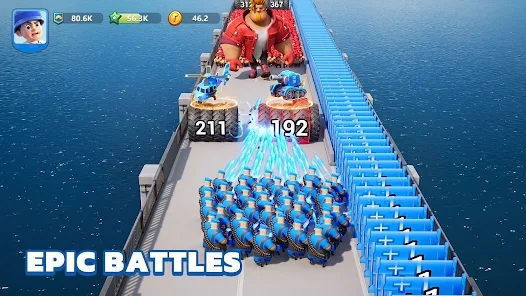Why Building Games Are Revolutionizing Creativity and Interactive Entertainment
If you’ve ever sat down with your tablet or smartphone and lost yourself in the world of gaming, you likely understand the magic behind building games. These games have become not just a pastime but a way for players to express their creativity, foster connections, and engage in interactive entertainment at an unprecedented level. Let’s explore how building games are changing the landscape of creative expression and gaming.
What Are Building Games?
Building games allow players to construct, create, and explore virtual worlds. These can range from simple mobile games to complex simulations. Some popular examples include:
- Minecraft: The quintessential building game where players can create anything they can imagine.
- Roblox: A platform that enables users to create their own games and experiences.
- Fortnite Creative: A mode within Fortnite that focuses on building and creative gameplay.
- Clash of Clans: A game that allows players to build their own villages and engage in multiplayer battles.
Games like Clash of Clans, where players design and fortify their clans, emphasize strategic creativity, blending construction with competitive gameplay. Players not only build but also strategize how to use their creations in the heat of battles.
The Rise of Creativity in Gaming
How do building games foster creativity? It's simpler than you might think. By providing the tools and a canvas for creation, players are given the freedom to innovate and express themselves. Here are some unique qualities that contribute to this creative revolution:
- Open-Ended Gameplay: Players have the freedom to create anything from towering castles to intricate mazes.
- Community Collaboration: Many building games encourage multiplayer modes, allowing players to work together and share resources.
- In-Game Economy: Players can buy, sell, and trade their creations, which motivates deeper engagement.
Interactive Learning Through Play
Building games are often educational too. They incorporate elements of engineering, architecture, and even programming, as players learn to think critically about their designs. This immersive environment fosters a learning experience that's both fun and deeply engaging. Some noteworthy educational aspects include:
| Skill Developed | Description |
|---|---|
| Critical Thinking | Players strategize about design, placement, and functionality, enhancing their decision-making skills. |
| Creativity | Design solutions require innovative thinking beyond traditional gaming experiences. |
| Collaboration | Working with others promotes teamwork and communication skills. |
Building Games and Social Interaction
One of the unique aspects of building games is their social interaction component. Whether in a public game or a private server, players connect and collaborate, making gaming a communal activity. This social element creates a sense of belonging and can lead to lasting friendships. Some social features include:
- Group Challenges: Engaging players in team-building exercises.
- Shared Experiences: Players encounter the same challenges and share strategies.
- Community Events: Special events that promote interaction and rewards.
The Economic Impact of Building Games
The gaming industry has seen significant revenue generation from building games. With millions of active users, these games dominate app stores, driving in-game purchases and subscriptions. Here’s a brief overview of their economic influence:
- Microtransactions: Players are willing to spend on unique building materials or customization options.
- Merchandising Opportunities: Popular games often expand into toys, clothing, and media.
- Game Development: Many developers focus on creating building games due to their popularity and player engagement.
Cross-Platform Flexibility
Today’s building games are not limited to one platform; they often allow cross-platform play. Players can build and interact using various devices, making it more accessible. This flexibility has opened gaming up to a wider audience, as highlighted in recent trends:
- Increased availability on both mobile and desktop platforms.
- Integration of online multiplayer modes across different systems.
- A larger player base due to accessibility, including those who may not typically play traditional video games.
Future Trends in Building Games
As technology evolves, so too will the building games landscape. We can expect several trends to shape the future of these interactive experiences:
- Augmented Reality (AR): Integrating AR for a more immersive experience.
- Artificial Intelligence (AI): AI could enhance gameplay by creating dynamic challenges and real-time feedback.
- Expansive Worlds: Larger, more complex game worlds that players can shape and explore without limits.
Why Are Building Games Popular Today?
The combination of creativity, social interaction, and strategic engagement makes building games a popular choice among players of all ages. Here are some reasons for their current popularity:
- Emotional connection and leisure provided by creativity.
- Engagement with friends and building communities.
- Access to learning experiences through gameplay.
Conclusion
The revolution of creativity and interactive entertainment through building games is undeniable. As we delve deeper into this genre, we uncover layers of not just play, but profound connection, education, and economic impact. With the onset of emerging technologies, the future of building games looks brighter than ever. The landscape is evolving, and it’s evident that building games are here to stay, inspiring a generation of creative thinkers and collaborative players.



